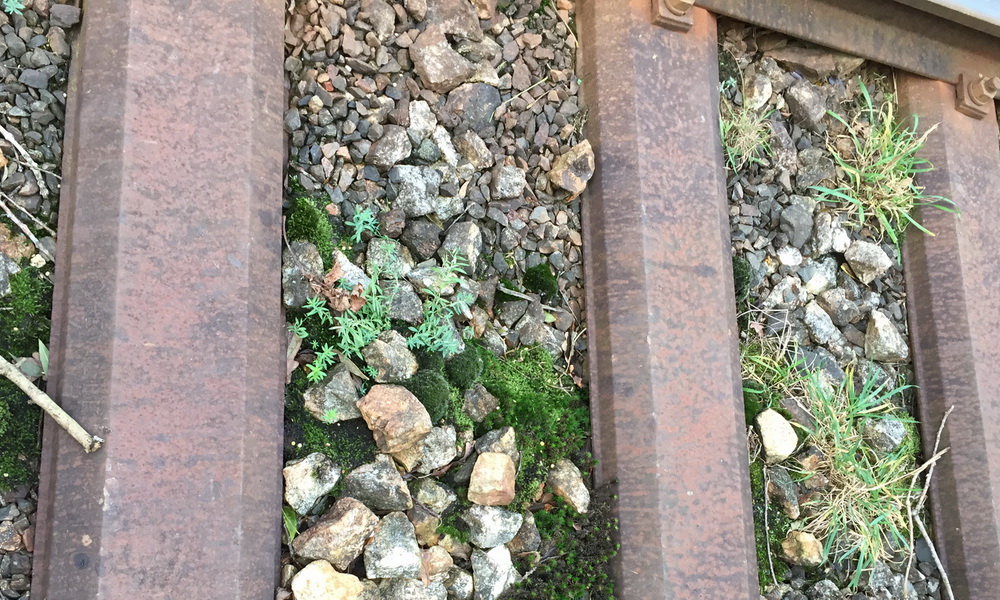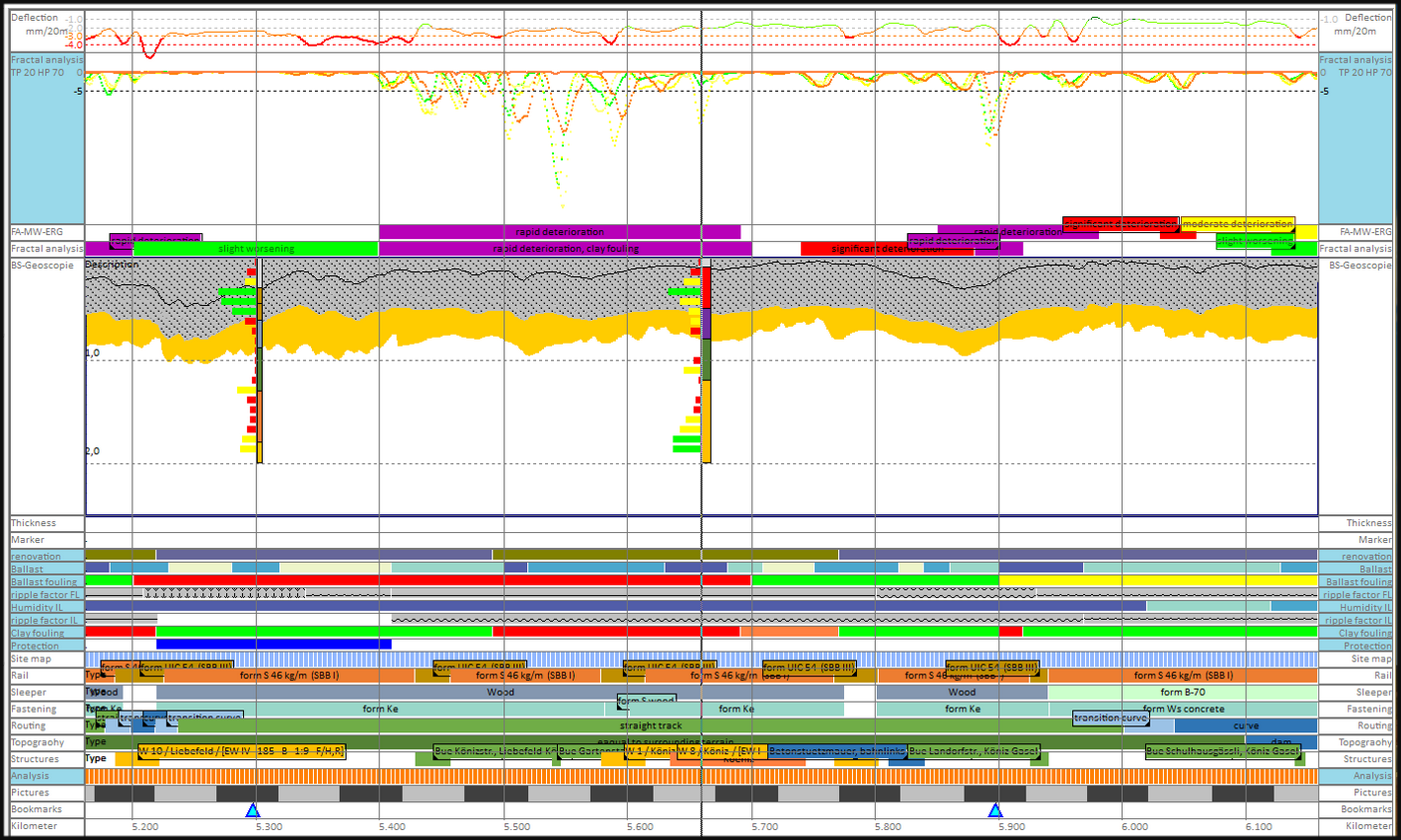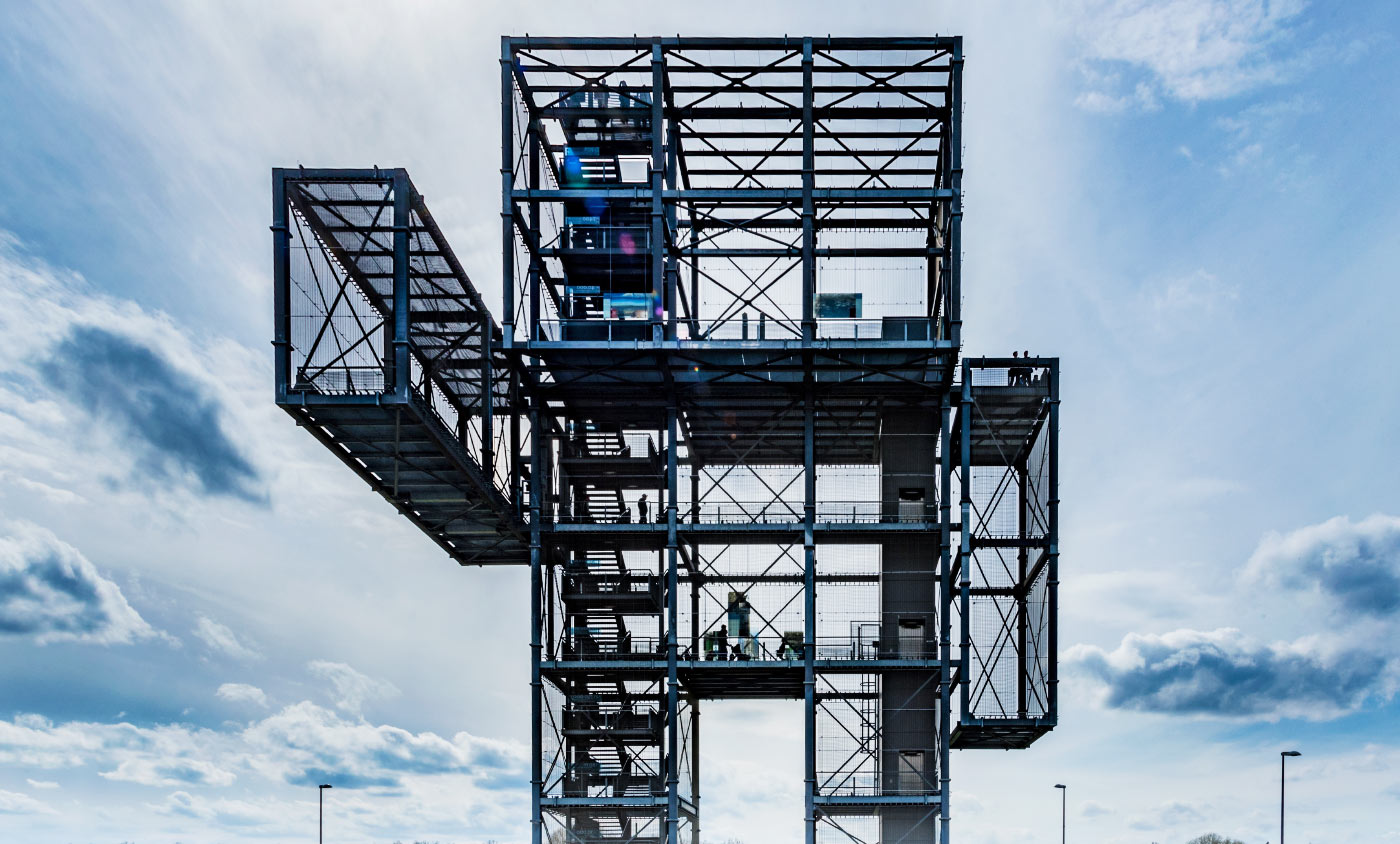FRACTAL ANALYSIS.
GET A DEEPER UNDERSTANDING.
As a result of, in particular, the dynamic loading from railway operation, settlements occur which can have a significant influence on the track geometry and which are also reflected in the related measurements.
The aim of our investigations is to be able to assign a specific cause of damage to different fault patterns. A new method which can be used is the fractal analysis of the longitudinal level of a track. This method allows assigning deviations from the target measured in the track geometry to the specific wavelength ranges and through this, to be able to assign specific fault patterns in the track geometry to specific causes.

From the corresponding research results, e.g. in Austria, our investigations focus on the medium-wave and long-wave areas, as derived fault patterns reflect the status of the ballast bed (medium-wave), or the status of the protective layers and the substructure (long-wave). These assumptions were confirmed between 2013 and 2015, mainly by means of comparisons with in-situ behavior, as well as by comparative measurements with ground penetrating radar.
Therefore, we use the fractal analysis as an indicator to describe the condition of the ballast bed and the substructure. In this process, we take into account the upper construction materials and assets (e.g. bridges, level crossings) in the surveyed area. Results are combined with other sources such as the GPR, drillings, soil analyzes and visual inspection to use this as a profound knowledge base.
Since the fractal analysis can also use data that has been captured several years ago, this method is ideally suited to quickly gain an overview across complete networks as well as to identify those areas, where further investigation, such as GPR and drillings are useful.


